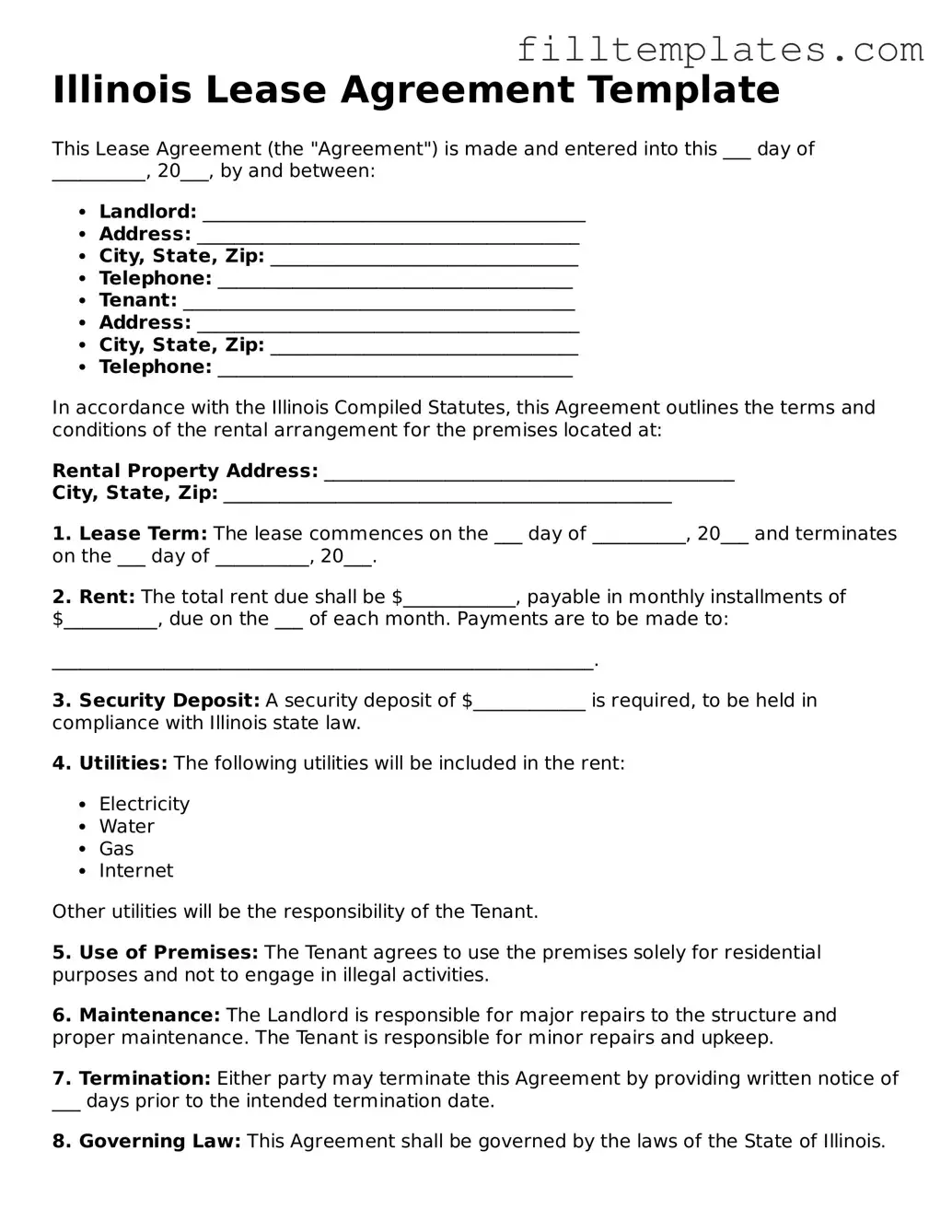Illinois Lease Agreement Template
This Lease Agreement (the "Agreement") is made and entered into this ___ day of __________, 20___, by and between:
- Landlord: _________________________________________
- Address: _________________________________________
- City, State, Zip: _________________________________
- Telephone: ______________________________________
- Tenant: __________________________________________
- Address: _________________________________________
- City, State, Zip: _________________________________
- Telephone: ______________________________________
In accordance with the Illinois Compiled Statutes, this Agreement outlines the terms and conditions of the rental arrangement for the premises located at:
Rental Property Address: ____________________________________________
City, State, Zip: ________________________________________________
1. Lease Term: The lease commences on the ___ day of __________, 20___ and terminates on the ___ day of __________, 20___.
2. Rent: The total rent due shall be $____________, payable in monthly installments of $__________, due on the ___ of each month. Payments are to be made to:
__________________________________________________________.
3. Security Deposit: A security deposit of $____________ is required, to be held in compliance with Illinois state law.
4. Utilities: The following utilities will be included in the rent:
- Electricity
- Water
- Gas
- Internet
Other utilities will be the responsibility of the Tenant.
5. Use of Premises: The Tenant agrees to use the premises solely for residential purposes and not to engage in illegal activities.
6. Maintenance: The Landlord is responsible for major repairs to the structure and proper maintenance. The Tenant is responsible for minor repairs and upkeep.
7. Termination: Either party may terminate this Agreement by providing written notice of ___ days prior to the intended termination date.
8. Governing Law: This Agreement shall be governed by the laws of the State of Illinois.
9. Signatures: By signing below, both parties agree to the terms of this Agreement.
Landlord Signature: _____________________________ Date: _______________
Tenant Signature: ______________________________ Date: _______________
